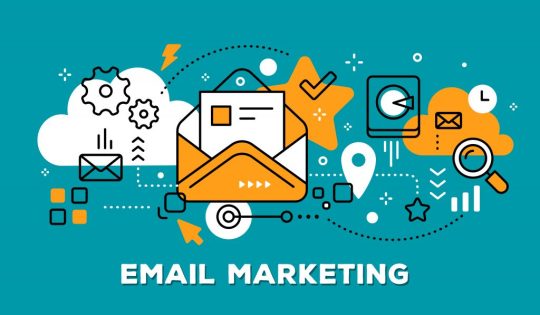#e commerce marketing
Text

#brand identity design#top ecommerce business#best ecommerce business#e commerce#e commerce business#ecommerce business ideas#e commerce marketing#best e commerce platforms#online e commerce#start ecommerce business#business by business#business ideas#business ideas business ideas
2 notes
·
View notes
Text

Master Product Photography with a White Background
Uncover professional tips and techniques for stunning product photography on a white background. Elevate your e-commerce images!
2 notes
·
View notes
Text

Strategies, Tips, and Tactics for E-Commerce Marketing
Marketers can effectively reach audience members, improve brand awareness, and increase online sales through the use of e-commerce marketing strategies that include the following elements:
1. Leverage E-Commerce Marketing Data
Data is a fundamental part of advertising and allows online businesses to connect with customers in the right place, at the right time, with the right offering. By taking a data-driven approach to e-commerce marketing, digital commerce teams can accurately personalize content, target audiences appropriately, and benchmark e-commerce data to improve strategies over time.
2. Personalize the Customer Experience
Personalized offers and content work to improve customer loyalty, increase active customer revenue, and drive customer retention. A good personalization engine will use artificial intelligence to deliver 1:1 product recommendations, purchase predictions, individualized offers, and ensure optimized send times.
3. Develop a Customer Loyalty Program
Loyal customers are your best asset. They add value to and grow your business through word of mouth marketing, social sharing, and more. They even spend 67% more on products and services when compared to new customers. So, why not reward them with a stellar loyalty program?
3 notes
·
View notes
Text
Digital marketing


Certainly! Creating a successful digital marketing blog involves covering various aspects of digital marketing, sharing valuable insights, tips, and trends. Here's a guide on what topics you can consider for your digital marketing blog:
SEO Strategies:
On-page SEO techniques
Off-page SEO tips
SEO best practices for content creation
Local SEO tactics
Content Marketing:
Content creation ideas
Content distribution strategies
How to create engaging and shareable content
Content marketing tools and platforms
Social Media Marketing:
Social media trends
Platform-specific strategies (Facebook, Instagram, Twitter, LinkedIn, etc.)
Social media advertising tips
Influencer marketing insights
Email Marketing:
Effective email campaign strategies
Email automation best practices
Email design and copywriting tips
Building and growing your email list
Digital Advertising:
Google Ads tips and tricks
Facebook Ads strategies
Display advertising insights
Video advertising best practices
Analytics and Data:
Google Analytics tutorials
Data-driven decision-making in marketing
Key performance indicators (KPIs) to track
A/B testing and optimization
Marketing Technology:
Marketing automation tools and their uses
CRM systems and their role in marketing
Emerging marketing technologies
Integrating tools for a seamless marketing stack
E-commerce Marketing:
Strategies for selling online
E-commerce SEO tips
Conversion rate optimization (CRO)
Customer retention and loyalty programs
Mobile Marketing:
Mobile advertising trends
Responsive design best practices
Mobile app marketing strategies
SMS marketing tips
Industry Trends and News:
Stay updated on the latest digital marketing trends
Cover industry news and updates
Predictions for the future of digital marketing
Remember to incorporate real-world examples, case studies, and practical advice to make your content more valuable for your readers. Regularly update your blog to stay relevant in the ever-evolving field of digital marketing. https://dev-shikhaislam-smm.pantheonsite.io
1 note
·
View note
Text
“Mastering E-commerce: Strategies for Successful Digital Marketing”
Leave a Comment / Blog / By digitalsandeepkushwaha
The way we shop has been complete altered by electronic commerce or e-commerce. It describes the purchasing and selling of products and services via the Internet. We have access to a wide range of items, ease, and accessibility thanks to this burgeoning sector. Customers can now compare prices, read reviews, and make purchases without ever leaving their homes through the growth of online marketplaces and platforms. E-commerce has changed consumer behavior and given businesses new options by allowing them to reach an international customer base and run around the clock. E-commerce is predicted to develop more as technology advances, influencing how retail is shaped going forward.
1. Online shopping
Our modern lifestyle has become completely reliant on online shopping since it provides unmatched ease and access to a vast array of goods and services. Almost anything can be bought with a few clicks, including groceries, electronics, clothes, and books. Those with hectic schedules who might not have time to visit actual stores will find this convenience very helpful. Additionally, online buying gives customers the ability to compare prices and read reviews before making a purchase by giving them a platform for comparison shopping. Millions of people worldwide are redefining the retail experience through online shopping thanks to safe payment methods and easy return policies.
2.Digital marketplace
As dynamic centers that link buyers and sellers in the enormous world of e-commerce, digital marketplaces have evolved. These platforms offer an online area where a wide range of goods and services are displayed. Digital markets products ranging from modern devices to handcrafted goods to a worldwide customer base, promoting variety and accessibility. Vendors gain access to a larger pool of prospective clients, while shoppers find it convenient to peruse a wide range of products from the comfort of their screens. Digital marketplaces are changing the way online through the implementation of safe payment methods and user ratings. resulting in an international market that fosters entrepreneurship and innovation.
3.Retail websites
Retail websites offer customers a convenient way to browse and buy things online, revolutionizing the traditional shopping experience. These websites provide a broad selection of products to suit a variety of likes and inclinations, ranging from luxury items to everyday necessities. Customers are guaranteed a flawless buying experience on retail websites because to their user-friendly interfaces and simple navigation. They frequently include thorough product descriptions, excellent photos, and user reviews to help with selection. Retail websites are a popular alternative for shoppers in the present era due to their secure payment gateways and dependable shipping options, which further boost their reputation for trust and convenience.
4.Electronic payments
In the digital age, electronic payments, or e-payments, have completely changed how financial transactions are carried out. With these transactions, there is no need for actual cash or cheques because money is transferred electronically. Credit cards, debit cards, mobile wallets, and online payment platforms are examples of electronic payment methods. They make it easy for customers to make purchases or transfer money since they provide speed, convenience, and security. Electronic payments have become essential to online buying with the growth of e-commerce, allowing for smooth transactions between consumers and sellers. Furthermore, by giving people all around the world access to digital financial services, electronic payments advance financial inclusion.
5.Internet retailing
Online retailing, or internet retailing, is the practice of purchasing and selling goods and services via the internet. Because it’s so easy to use and convenient, this selling strategy has been increasingly popular in recent years. Through internet retailing, customers can use a variety of devices, including computers, cellphones, and tablets, to browse and buy things either at home or on the move. Retailers use social media platforms, online marketplaces, and websites to highlight their goods and attract customers from around the world. Internet retailing has completely changed the way we purchase by providing a streamlined and effective shopping experience, secure payment alternatives, and dependable shipping services.
6. Virtual storefronts
Traditional brick-and-mortar retail shops have evolved digitally into virtual storefronts. These internet-based platforms function as the digital storefronts for companies, offering clients an online area to peruse and buy goods and services. Businesses can tap into worldwide marketplaces and reach a larger audience by using virtual stores, which transcend regional boundaries. To improve the online buying experience, these stores frequently have user-friendly interfaces, excellent product photos, and thorough product descriptions. Trust and consumer satisfaction are fostered by further streamlining transactions through secure payment gateways and smooth checkout procedures. Virtual storefronts, which give companies an economical and effective method to engage with customers in the digital age, are changing the retail environment.
7.E-commerce platforms
E-commerce platforms serve as the foundation for online businesses, offering a comprehensive suite of tools and features to facilitate online transactions and manage digital storefronts. These platforms provide businesses with everything they need to build, launch, and scale their online stores, including website templates, shopping cart functionality, payment gateways, and inventory management systems. Popular e-commerce platforms like Shopify, Woo Commerce, and Big Commerce offer customizable solutions tailored to the unique needs of businesses of all sizes and industries. With user-friendly interfaces and robust backend capabilities, e-commerce platforms empower entrepreneurs to establish a strong online presence, attract customers, and drive sales in the competitive digital marketplace.
8.Mobile commerce (m-commerce)
Mobile commerce, often referred to as m-commerce, represents the buying and selling of goods and services through mobile devices such as smartphones and tablets. This form of e-commerce has surged in popularity due to the widespread adoption of mobile technology and the convenience it offers to consumers. M-commerce allows users to shop anytime, anywhere, making it ideal for busy individuals who are constantly on the go. With mobile-optimized websites and dedicated shopping apps, retailers can provide seamless and intuitive shopping experiences tailored specifically for mobile users. Secure mobile payment options, including mobile wallets and digital payment platforms, further streamline the purchasing process, driving the growth of m-commerce as a key driver of online retail.
9.Online transactions
Online transactions have become a cornerstone of modern commerce, reshaping the way we exchange goods and services. Through secure digital channels, individuals and businesses engage in financial activities, from purchasing products to paying for services, without the need for physical presence. The rise of e-commerce has propelled online transactions to the forefront, offering convenience, speed, and efficiency. Secure payment gateways, encryption technologies, and multi-factor authentication contribute to the safety of online transactions, instilling trust among users. As technology continues to advance, online transactions play a pivotal role in creating a seamless and interconnected global marketplace, facilitating economic activities across borders in a digital era.
10.E-commerce solutions
E-commerce solutions encompass a suite of tools and technologies designed to empower businesses in establishing and managing their online presence. These comprehensive solutions cater to the diverse needs of online retailers, providing a range of functionalities from website development to payment processing and inventory management. E-commerce platforms such as Shopify, WooCommerce, and Magento are prime examples, offering customizable solutions for businesses of all sizes. These solutions streamline the online shopping experience for both businesses and consumers, facilitating smooth transactions, secure payment processing, and robust order fulfillment. In a dynamic digital landscape, investing in the right e-commerce solutions is crucial for businesses seeking t
0 notes
Text
E-Commerce Marketing portfolio for “Nomad Boutique”
Transforming Dreams into Sales! Explore Aamir Digital Media’s E-Commerce Marketing Mastery for Nomad Boutique. Boost Your Business Beyond Limits!
Overview:
“Nomad Boutique”, a trendy fashion retailer, approached our agency seeking a comprehensive e-commerce transformation to enhance their online presence, drive sales, and improve customer engagement. Our team seamlessly integrated web…

View On WordPress
#Digital marketing#e commerce digital marketing#e commerce marketing#shopify store design#shopify store seo
0 notes
Text
تعرف على أبرز الفوائد للتجارة الالكترونية
تعتبر التجارة الإلكترونية من النماذج المتقدمة للتجارة التي تستفيد من التكنولوجيا الحديثة والإنترنت. إليك بعض الفوائد البارزة للتجارة الإلكترونية:
**وصول عالمي:**
— تتيح التجارة الإلكترونية للشركات الوصول إلى عملاء في جميع أنحاء العالم بسهولة، مما يوسع الفرص التجارية ويزيد من الإيرادات وتعتبر من اهم فوائد التجارة الالكترونية .
**توفير التكاليف:**
— تقليل التكاليف التشغيلية بشكل كبير مقارنة بالتجارة التقليدية، حيث لا حاجة للمحلات الفعلية وتكاليف الإيجار والصيانة.
**راحة العملاء:**
— يمكن للعملاء تصفح وشراء المنتجات في أي وقت ومن أي مكان، مما يزيد من راحتهم ويحسن تجربة التسوق.
**تحسين التسويق والإعلان:**
— فرص أفضل للتسويق عبر وسائل التواصل الاجتماعي والإعلان عبر الإنترنت للتواصل مع جمهور أوسع.
**معالجة سريعة للطلبات:**
— توفير عمليات معالجة سريعة للطلبات وتوصيل سريع للمنتجات، مما يزيد من رضا العملاء.
**تحليل البيانات:**
— القدرة على جمع وتحليل البيانات بشكل فعال لفهم احتياجات العملاء وتحسين العمليات التجارية.
**توفير الوقت:**
— تقليل الحاجة إلى وقت طويل للتنقل والبحث في المحلات، مما يساهم في توفير وقت العملاء والتاجر.
**سهولة إدارة المخزون:**
— إمكانية إدارة المخزون بشكل أفضل من خلال أنظمة الإدارة الإلكترونية، مما يقلل من فرص نفاذ المنتجات.
**توفير وثائق رقمية:**
— إمكانية تخزين وإرسال الفواتير والوصول إلى السجلات الرقمية بسهولة.
**تحسين الأمان:**
— استخدام التشفير ووسائل أمان أخرى لحماية المعلومات الشخصية والمالية للعملاء.
تتيح فوائد التجارة الالكترونية للشركات تحسين كفاءة عملها وتقديم خدمات أفضل للعملاء، مما يجعل التجارة الإلكترونية نموذجًا جذابًا للأعمال التجارية في
#e commerce development#e commerce solution bd#e commerce website design#e commerce seo#seo#online shopping#online store#e commerce marketing
0 notes
Text
e-commerce and online selling
E-commerce and Online Selling: A Comprehensive Guide for Aspiring Entrepreneurs
0 notes
Text
Tips for making your Shopify store a success
Tips for making your Shopify store a success
A mobile-friendly Shopify store also helps all around with things like content marketing and SEO, so it should be one of your first priorities before the launch.
Compress Your Images to Reduce Loading Times
Run Each New Page through Google's Mobile-Friendly Test
Minimize Unnecessary Plugins on Your Site
Use an Upsell App to Increase Your Shopify Success Rate
Upsell apps like reconvert can help to increase average order value with a minimal upfront investment, ultimately leading to even higher ROI.
Using suggestive selling tactics in your own store is one of the best ways to increase your average order value from every transaction.
Invest Resources in Marketing Channels with High ROI
Online advertising is great, but sometimes brands find the most success with less competitive channels. Consider diverting a portion of your marketing resources towards less competitive channels:
SEO and Content Marketing
Affiliate & Referral Marketing
Form Strategic Brand Partnerships
Create and Utilize Your Email List to Its Full Extent
Email marketing forms the backbone of many huge brands' marketing operations, and for good reason.
It's one of the best ways you can recapture abandoned carts, stay at the top of consumer minds, and provide valuable content that converts casual customers into loyal followers.
Ensure Your Shipping is Fast & Reliable
In the age of Amazon shopping, ecommerce customers expect lightning-fast shipping.
If your store doesn't provide fast shipping, or even worse, products arrive damaged. You'll likely see a flood of bad reviews, returned products, and lost customers.
To avoid that, make sure that your products are shipped and delivered promptly.
Prioritize Stellar Customer Service for a Higher Shopify Success Rate
Bad customer service can mean a lost customer and a negative review for your business. On the other hand, great customer service can be the start of a customer's journey towards being a loyal brand follower.
Here are a few tips you can use to improve your store's customer service:
Reduce Waiting Times
Use a Live Chat App
Take Customer Feedback Seriously
Focus on High-Ticket Products with High Markups
A low product markup means you'll have to use the minimum amount of resources possible to earn each purchase and stay profitable. This can be especially tricky in the beginning when you're trying to build awareness of your brand and get customers to purchase.
A markup of at least 200% means that you won't be cutting it too close for most products, and you'll have ample resources to make a significant profit on every purchase.
For More information visit our website :- https://jgservices.in/
#e commerce#e commerce business#e commerce solution#e commerce company#e commerce shopify#online commerce#e commerce marketing#e business#shopify business#e commerce solutions services#shopify services#e commerce services#shopify development#shopify account#shopify website#shopify store#best e commerce business
0 notes
Text
Increasing ROI: Harnessing Digital Marketing's Potential in E-Commerce

E-commerce has become a game-changer in the commercial landscape in today's fast-paced, technologically advanced world. Digital marketing has become an essential tool for e-commerce enterprises to reach their target audience efficiently and maximize Return on Investment (ROI) as a result of the growing reliance on the internet for shopping and transactions. In this blog, we'll look at how implementing several digital marketing strategies strategically can have a big impact on e-commerce performance. These strategies include email marketing, social media advertising, website development, and pay-per-click campaigns.
Email marketing is one.
Email marketing is still one of the most effective methods of digital marketing today, even if it is one of the oldest. Customer preferences and behavior can be taken into account when creating personalized email messages, which can increase engagement and conversion rates. Businesses may build a loyal customer base and boost the likelihood of repeat business by offering insightful content, special deals, and customized product recommendations.
Social media promotion
Social media platforms' rapid expansion has given e-commerce companies unrivaled opportunity to present their goods to a wide range of customers. Brand visibility and reach can be greatly increased by using targeted social media marketing based on user demographics, interests, and behavior. Users' attention might be caught with interesting ad forms, such movies and carousel advertising, encouraging them to explore further and possibly make a purchase.
Management of social media:
Businesses must actively manage and engage with their audience in order to have a successful social media presence. Social media management entails providing prompt answers to client questions, resolving issues, and disseminating informative information that appeals to the target audience. Developing a social media brand personality helps businesses connect with customers, which fosters brand loyalty and helpful word-of-mouth advertising.
Creation and administration of websites:
Any successful e-commerce endeavor is built on a solid, user-friendly website. A website's performance, responsiveness, and navigability are all optimized when professional website development is used. For clients to have a seamless and satisfying purchasing experience, regular website management and upgrades are crucial. A clean, user-friendly website can lower bounce rates dramatically and enhance the likelihood that visitors will become paying clients.

Hosting a website:
For e-commerce enterprises, selecting the best website hosting provider is essential. A dependable and effective website hosting company guarantees little downtime, quick page loads, and safe transactions. Customers may become impatient with a slow-loading website, which may lead to lost sales chances. Investing in high-quality hosting will increase SEO rankings and customer happiness.
Campaigns for Pay-Per-Click (PPC):
PPC campaigns let e-commerce companies run tailored ad displays on search engines and other online properties while only being charged when customers actually click the advertisement. By only charging for clicks that result in conversions, this advertising strategy guarantees that companies get the most out of their marketing budgets. Businesses can increase the return on investment (ROI) from PPC campaigns by optimizing their keywords and ad wording.
Return on Investment (ROI):
Any digital marketing strategy's efficacy must be evaluated using ROI calculations. Finding the ads that work best for an e-commerce company requires tracking and assessing their success. Businesses may fine-tune their marketing strategies and put more of their attention on the channels that deliver the best returns by tracking conversions, sales, and client acquisition costs.
And finally:
Embracing digital marketing is not a luxury but a requirement in the changing world of e-commerce. Each strategy—from email marketing to social media promotions—is essential for increasing traffic, conversions, and eventually, money. E- companies may guarantee a seamless shopping experience and increase consumer happiness by focusing on website construction, social media advertisement, and hosting. Additionally, businesses may make data-driven decisions that help them remain ahead of the competition and maximize their online success through the strategic use of pay-per-click campaigns and ongoing ROI review.
#e commerce marketing#email marketing#Social media advertisement#Social media management#website development#website management#website hosting#pay-per-click#ROI – Return on Investment#digital marketing
0 notes
Text
Email Marketing Automation Strategy – DispoSkill
What's Email Marketing?
Simply, Email Marketing may be a sort of Digital Marketing, where you collect emails from people during a specific niche.
Then you send emails to those people promoting a service, product, blog, or anything so you’ll increase your revenue & web traffic.
I will cover the subsequent topics:
Email Marketing Overview
Email Marketing System in Deep
Building Email Lists
Important Strategy
Visit: Email Marketing Automation Strategy – AllinTutorial

#email marketing#comment gagner de l'argent en ligne#marketing#affiliatemarketing#marketing digital#revenue#entrepreneur#e commerce#mangement#digitalmarketing#digital marketing#marketing strategy#online bus ticketing system#email automation
213 notes
·
View notes
Text
#email marketing#email mailing#digital marketing#e commerce#landing page#advertising#affiliate marketing#online business#businessopportunity#freelance#businessowner#businessideas
274 notes
·
View notes
Text
Emtechre Digital Agency: Your Gateway to Exceptional Web Design
Emtechre Digital Agency: Your Gateway to Exceptional Web Design
Today, for your company’s online success, a professionally designed website can make a difference. We at Emtechre Digital Agency are devoted to designing websites that are visually stunning and have high functionality that enthrall the audience and yield tangible results.
We have a team of talented designers and developers who are capable of making your online presence a powerful tool for growth. After all, we realize that your site means more than just some web pages; it represents your brand as well as a vital point of contact with potential customers.
Our approach to web design is based on providing outstanding user experience. The website must be intuitive, visually beautiful and easy to navigate. Consequently, by implementing latest industry standards and best practices, we develop seamless and engaging user interfaces which will impress the visitors in an enduring way.
Emechre Digital Agency is proud to offer you customized solutions for your needs. We know every business has different goals and needs. Our team will cooperate with you in designing and deploying a solution that suits your vision whether it is a sleek informative website, a robust e-commerce platform or dynamic web application.
We are naturally built to stay ahead of the rest. We keep up with new technologies and trends so that your website remains modern, functional, and future-proof. From mobile first design that optimizes well for different devices, to incorporating interactive elements that enhance user engagement, we infuse innovation into every aspect of our web design process.
Our partnership with clients is based on integrity and openness. We value your contributions and opinions, believing that a successful website is a result of teamwork. All through the web designing journey, we keep you posted by giving updates frequently and seeking for your feedback so as the final product will be beyond your expectations.
In conclusion, Emtechre Digital Agency is your go-to partner for web design excellence. Our team of experts combines artistic creativity with technical prowess to create stunningly beautiful websites that move your business forward. Employing an approach that is aimed at addressing the users’ needs, offering tailor made solutions as well as being committed to technological change leadership; we will ensure you make an impressive online footprint. Trust Emtechre Digital Agency to transform your website into a powerful asset that sets you apart from the competition and propels your business to new heights.
#web design#web development#webdesign#website#digital agency#digital marketing#e commerce#web developers#software#ads#google ads#social media management#seo services#seo#digitalmarketing#desing
11 notes
·
View notes
Text
Maximizing Ecommerce Success: A Comprehensive Guide to Key Performance Indicators (KPIs)

Introduction
In the dynamic landscape of online retail, performance metrics are the compass guiding businesses toward success. Key Performance Indicators (KPIs) serve as crucial milestones, directing ecommerce entrepreneurs to navigate the complex realm of sales, marketing, and customer service. In this comprehensive guide, we at RMRKBL Marketing delve into the intricate world of KPIs, offering profound insights to empower your business decisions and drive unparalleled growth.
Unveiling the Essence of Performance Indicators
A performance indicator, a beacon in the data-driven journey, is a quantifiable measurement aligning with specific goals. Picture an online retailer aspiring to boost site traffic by 50% in the next year – a noble ambition. Key indicators could include daily unique visitors, traffic sources (paid advertising, SEO, brand advertising), or the holy grail of customer lifetime value.
Decoding Key Performance Indicators
Amidst a plethora of potential metrics, the crux lies in identifying key performance indicators (KPIs) – impactful data points succinctly reflecting progress toward defined goals. In this pursuit, Shopify's robust reporting and analytics emerge as invaluable tools, boasting over 60 pre-built dashboards to illuminate trends and catalyze informed decision-making.
The Significance of KPIs
Why are KPIs as vital as strategy and goal setting? They transcend mere statistics, offering actionable insights that propel strategic decision-making. Without KPIs, businesses risk navigating uncharted waters, relying on intuition rather than data-driven precision. Harnessing KPIs fosters a deeper understanding of your business and clientele, fostering informed strategies for online sales growth.
Classifying Key Performance Indicators
KPIs, versatile in nature, span qualitative, quantitative, predictive, and historical dimensions, permeating various business operations. In the ecommerce domain, KPIs elegantly align with five core categories: Sales, Marketing, Customer Service, Manufacturing, and Project Management.
Sales: A Symphony of Success
In the realm of sales, mastering KPIs is akin to orchestrating a symphony of success. Ecommerce retailers can fine-tune their performance through vigilant tracking of crucial metrics such as total sales, average order
size, gross profit, average margin, and more. Each metric unveils a facet of your business, from understanding customer behavior through conversion rates and shopping cart abandonment rates to strategic insights on product affinity and competitive pricing.
Unlocking Sales KPIs
1. Total Sales
Ecommerce success hinges on understanding sales patterns. Monitor sales on an hourly, daily, weekly, monthly, quarterly, and yearly basis to discern trends and capitalize on peak periods.
2. Average Order Size
Delve into customer spending habits with the average order size, a pivotal KPI reflecting the typical expenditure per order. This insight informs pricing strategies and product bundling opportunities.
3. Gross Profit
Measure business efficiency by calculating gross profit – the difference between total sales and the cost of goods sold. A nuanced understanding ensures profitability and strategic decision-making.
4. Conversion Rate
Efficiency in converting visitors to customers is paramount. The conversion rate, expressed as a percentage, illuminates the success of your ecommerce site in turning visitors into buyers.
5. Customer Lifetime Value (CLV)
The heartbeat of sustainable growth lies in the customer lifetime value. Nurture long-term relationships by understanding how much a customer contributes over their engagement with your brand.
6. Revenue per Visitor (RPV)
Evaluate the effectiveness of your site in converting visitors into revenue. Low RPV prompts a deep dive into analytics, optimizing the user experience to drive more online sales.
7. Customer Acquisition Cost (CAC)
Strategically invest in customer acquisition by deciphering the cost of acquiring new customers. Analyze marketing spend breakdown to ensure efficient customer acquisition.
8. Inventory Levels
Maintain optimal stock levels by closely monitoring inventory metrics. Insights into stock turnover, product velocity, and sitting stock guide inventory management strategies.
9. Competitive Pricing
Benchmark against competitors by scrutinizing pricing strategies. An agile approach to pricing ensures your business remains competitive and attuned to market dynamics.
10. Product Affinity
Uncover cross-promotion opportunities through product affinity analysis. Identify products frequently purchased together, fueling targeted marketing strategies.
11. Product Relationship
Strategically plan cross-selling tactics by understanding which products are viewed consecutively. Leverage this KPI to enhance product recommendations and elevate user experience.
12. Churn Rate
Customer retention is paramount. The churn rate reveals how swiftly customers are departing. Swift action can mitigate losses and foster sustained loyalty.
13. Cost per Click (CPC)
For paid advertising success, track the cost incurred for each click. Optimize ad campaigns by aligning CPC with conversion rates, ensuring a balanced marketing budget.
Marketing Mastery: Unleashing Potency Through KPIs
Marketing KPIs wield immense power in sculpting the success story of your ecommerce venture. From driving website traffic to deciphering customer behavior, these metrics guide strategic marketing endeavors.
Navigating Marketing KPIs
1. Website Traffic
Website traffic serves as the heartbeat of ecommerce success. Monitor the total number of visits to your site, interpreting trends and refining marketing strategies accordingly.
2. New Visitors vs. Returning Visitors
Distinguish between first-time visitors and returning patrons. This insight aids in assessing the efficacy of digital marketing campaigns and tailoring strategies for diverse audiences.
3. Time on Site
Evaluate user engagement by analyzing the time visitors spend on your website. A deeper engagement with blog content and landing pages signals brand affinity.
4. Bounce Rate
High bounce rates demand attention. Investigate the reasons behind visitors exiting after viewing a single page, optimizing user experience and content relevance.
5. Page Views per Visit
Navigate user journeys by understanding the average number of pages viewed during each visit. Balance engagement with ease of navigation to enhance the user experience.
6. Average Session Duration
Dive into user behavior with the average session duration. Longer durations indicate profound interactions with your site, particularly with blog content and landing pages.
7. Traffic Source
Decipher the origins of website traffic through the traffic source KPI. Channel-specific insights guide focused marketing efforts, whether from organic search, paid ads, or social media.
8. Mobile Site Traffic
Optimize for mobile success by monitoring the influx of users accessing your store via mobile devices. A mobile-friendly site ensures a seamless experience for a diverse audience.
9. Newsletter Subscribers
Harness the potential of email marketing by tracking newsletter subscribers. Analyze demographics to tailor content and maximize reach, ensuring alignment with target audiences.
10. Email Open Rate
Elevate email marketing effectiveness by scrutinizing the percentage of subscribers opening your emails. Test subject lines and maintain list hygiene for optimal engagement.
11. Email Click-Through Rate (CTR)
Drive traffic to your site with a high email click-through rate. This KPI measures the percentage of subscribers clicking on links, a pivotal factor in conversion success.
12. Social Followers and Fans
Measure brand loyalty and awareness through social media metrics. The number of followers and fans on platforms like Facebook, Instagram, and Twitter signifies audience engagement.
13. Return on Ad Spend (ROAS)
Evaluate ad campaign efficacy by gauging the revenue earned for every dollar spent on advertising. ROAS serves as a compass, steering advertising strategies toward profitability.
14. Cost per Click (CPC)
Unveil the cost incurred for each click on paid ads. Efficiently manage marketing budgets by aligning CPC with conversion rates, ensuring optimal returns on investment.
15. Social Media Engagement
Quantify brand engagement with social media followers through the social media engagement KPI. Active interaction signals a vibrant community and potent brand-consumer connections.
16. Clicks
Track the total number of clicks across various platforms – website, social media, email, and ads. A holistic perspective aids in refining content and optimizing engagement strategies.
17. Average Click-Through Rate (CTR)
Measure user engagement with the average click-through rate, revealing the percentage of users clicking on links. Optimize content placement and messaging for heightened effectiveness.
18. Average Position
Ascend the search engine ranks with insights from the average position KPI. Understand your site's SEO and paid search performance, striving for the coveted top position.
19. Pay-Per-Click (PPC) Traffic Volume
Evaluate the success of PPC campaigns by tracking traffic volume. Strategic adjustments based on PPC insights ensure targeted traffic influx to your site.
20. Blog Traffic
Uncover the impact of blog content by isolating blog traffic metrics. Compare blog traffic against overall site traffic for a nuanced understanding of content effectiveness.
21. Number and Quality of Product Reviews
Harness the power of social proof with product reviews. Track quantity and content to leverage customer feedback for SEO, brand credibility, and business refinement.
22. Banner or Display Advertising CTRs
Optimize banner and display ad performance by scrutinizing click-through rates. Insights into copy, imagery, and offer effectiveness guide strategic adjustments for enhanced engagement.
23. Affiliate Performance Rates
Leverage affiliate marketing with insights into performance rates. Identify successful channels, refining strategies to maximize the impact of affiliate partnerships.
Elevating Customer Service through KPI Excellence
Customer service KPIs stand as sentinels, guarding the gateway to customer satisfaction. Scrutinize these metrics to ensure your support teams exceed expectations and cultivate lasting customer relationships.
Pioneering Customer Service KPIs
1. Customer Satisfaction Score (CSAT)
Quantify customer satisfaction through the CSAT metric. Harness customer feedback to refine service strategies and foster a positive brand perception.
2. Net Promoter Score (NPS)
Measure customer loyalty with the Net Promoter Score. Identify brand advocates and detractors, directing efforts toward building a robust community of brand enthusiasts.
3. First Response Time
Efficient customer service hinges on swift responses. Monitor the time taken for the first response to gauge support team efficacy and ensure timely issue resolution.
4. Ticket Resolution Time
Expedite issue resolution by scrutinizing ticket resolution times. Streamline support processes based on these insights to enhance customer satisfaction.
5. Customer Retention Rate
A flourishing business thrives on customer retention. The retention rate KPI illuminates the success of your efforts in cultivating lasting relationships with clients.
6. Customer Complaint Resolution
Transform challenges into opportunities by mastering customer complaint resolution. Evaluate resolution times and customer feedback to fortify your support ecosystem.
7. Service Level Agreement (SLA) Adherence
Set and surpass customer expectations with SLA adherence. Track the percentage of support requests meeting agreed-upon response and resolution times.
8. Customer Effort Score (CES)
Simplify customer interactions with the Customer Effort Score. Minimize friction in customer journeys, fostering seamless and enjoyable experiences.
9. Contact Volume
Analyze contact volume to understand support team workload. Proactive adjustments to staffing and resources ensure consistent service excellence.
10. Customer Service Channel Performance
Decipher the effectiveness of various customer service channels – live chat, email, phone. Optimize resource allocation based on channel performance to maximize customer satisfaction.
11. Agent Performance
Empower support teams through insights into agent performance. Identify top performers and areas for improvement, ensuring a high standard of service across the board.
Conclusion: Mastering the Art of KPIs for Ecommerce Triumph
In the intricate tapestry of ecommerce success, KPIs serve as the warp and weft, weaving a narrative of progress and prosperity. Unleash the potential of your online venture by embracing the nuanced insights offered by sales, marketing, and customer service KPIs. Propel your business forward, navigate challenges, and sculpt a legacy of unparalleled success in the competitive realm of online retail.
FAQs
Why are KPIs crucial for ecommerce success?
KPIs, or Key Performance Indicators, provide quantifiable insights into the performance of various aspects of your ecommerce business. They guide strategic decision-making, enhance customer experiences, and drive overall success by aligning actions with specific goals.
How can I use KPIs to improve my online sales?
Analyzing sales KPIs such as total sales, average order size, conversion rate, and customer lifetime value empowers you to optimize pricing strategies, understand customer behavior, and implement targeted marketing efforts for increased online sales.
What role do marketing KPIs play in ecommerce?
Marketing KPIs, including website traffic, engagement metrics, and return on ad spend, offer actionable insights into the effectiveness of your marketing efforts. These metrics help refine strategies, boost brand awareness, and drive targeted traffic to your ecommerce site.
How do customer service KPIs contribute to business growth?
Customer service KPIs, such as customer satisfaction scores, first response time, and ticket resolution time, play a pivotal role in fostering positive customer relationships. Meeting and exceeding customer expectations leads to increased loyalty, positive word-of-mouth, and sustained business growth.
Can KPIs really help in inventory management?
Absolutely. Sales KPIs related to inventory levels, product affinity, and competitive pricing provide crucial insights into stock turnover, product popularity, and market competitiveness. Effectively managing inventory based on these KPIs ensures optimal stock levels and minimizes wastage.
Are there specific KPIs for evaluating the success of PPC campaigns?
Yes, monitoring KPIs such as pay-per-click (PPC) traffic volume, cost per click (CPC), and return on ad spend (ROAS) provides a comprehensive view of your PPC campaign performance. These metrics help optimize ad budgets, refine targeting, and maximize the impact of your advertising efforts.
Can KPIs help me understand the effectiveness of my social media marketing?
Certainly. Social media KPIs like social followers, engagement metrics, and click-through rates provide insights into the impact of your social media efforts. Understanding these metrics enables you to refine content strategies, build brand loyalty, and expand your social media presence.
How often should I review and update my KPIs?
Regular reviews are crucial to adapt to changing market dynamics. Consider monthly reviews for short-term KPIs and quarterly or annually for long-term goals. Adjust KPIs based on business priorities, industry trends, and the evolving needs of your ecommerce venture.
#digital marketing#e-commerce#localbusiness#marketing#seo#seo agency#seo company#local#seo expert#kpi#kpi metrics
7 notes
·
View notes
